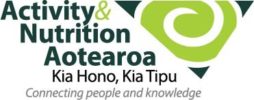#BeActive: What Can You do?
Kay Thomson, manager of strategic projects at Sport NZ shares her insightful blog with ANA.
Did you wake up this morning wondering how you could get more people and populations more physically active? If so, then you are reading the right article.
Do you remember the 7th Activity and Nutrition conference 2017 when Fiona Bull from the World Health Organisation (WHO) spoke of their plan to develop a Global Action Plan on Physical Activity (GAPPA)? [On 5th June, 2018] in partnership with the Portuguese Government ‘More people active for a healthier world’ was released. This was no small feat. They developed the plan over the last year, based on the best available evidence, and international consultation with all sectors of government, civil society, non-state actors, private sector, research and academic community, including an online consultation. The plan has four strategic objectives and 20 policy actions to achieve a 15% relative reduction in physical inactivity by 2025.
Please take some time to read ‘More people active for a healthier world’ and identify what you can do in your current role to put it into action – it’s publicly available here and is full of insightful, guiding strategies. In case you can’t find time to read the plan and resource today, I’ve picked out some tangible actions you could apply from each of the 4 strategic objectives:
- Create an active society;
- Create active environments;
- Create active people; and
- Create active systems
Or if you need some motivation, see the short video clip here
The active society objective is about communication and driving social change. A key action is to articulate clear messages and make the social, economic, health and environmental benefits of being physically active and help them go viral. You could do this though aligning your advice with national or local physical activity campaigns, echoing the messages which already exist. Consistent terminology and communication will build the momentum for people to gain knowledge and awareness of the benefits across all sectors. The glossary within the document provides WHO definitions which are a great resource to ease working in partnerships and investing in policy actions. If you want a more hands on approach to raising awareness of physical activity and benefits reaped from it, step outside the office and work with some local community leaders and sponsors to organise regular culturally appropriate events to get people more active in public spaces, anything from Parkrun, dancing, Tai Chi or football – support and promote movement so it becomes more and more ‘normal’ to #BeActive.
The second objective refers to making places and spaces accessible and safe for people to do physical activity. We like to imagine piano stairs, adult playgrounds with slippery dips, geo-caching and outdoor gyms on train platforms but let’s not get too excited. Adding things like lighting, amenities and footpaths to public spaces to encourage more walking, or signs on stairwells in areas of need to promote daily movement would have huge benefits. The sustained population benefits from environmental changes which enable people of all cultures, life stages and abilities to enjoy being active should continue to build evidence across multiple sectors.
Creating active people, the third strategic objective, is really where [Sport New Zealand’s] Community Sport strategy can come into its own and answer the ‘More people active for a healthier world’ call to action. Every contact is an opportunity to support and encourage other people to be more active. Ensuring coordinated links between patients and resources in their community to promote regular physical activity and reduce the time they spend sitting will secure multiple benefits.
Programs and opportunities which create active people should be equally accessible for people of all ages and abilities. There isn’t going to be a one size fits all approach to increasing physical activity – each individual, school and community will be different. Never assume you know best, no matter how long you have been working. Focus on engaging the community you are working with, find out their strengths and involve them in designing and delivering targeted grass roots opportunities to be active. Prioritise working with the least active people in your area, such as women, older adults and disadvantaged populations to shift population physical activity in a positive direction. That said, ensuring more positive experiences for active recreation, sport and play for children and adolescents through whole-of-school approaches, are key to establish and reinforce life-long confidence, motivation and skills to move across the population.
The final objective is to create active systems. In order to create active systems, we should leverage multisectoral partnerships to create multiplicative benefits that will remain over time. A key action for you is to advocate for action at all levels and encourage others to do the same. Get as many people involved in efforts to increase physical activity as you can. If everyone in your workplace/network is aware of the physical activity benefits, then use available resource to build their capacity as leaders and advocates to extend the messages across their networks. Utilise the bite-sized ‘More people active for a healthier world’ resources to advocate and demonstrate the importance of creating active systems in any sectors you come into contact with.
The mission is to “Ensure that all people have access to safe and enabling environments and to diverse opportunities to be physically active in their daily lives, as a means of improving individual and community health and contributing to the social, cultural and economic development of all nations”.
At Sport NZ we focus on the role that sport and active recreation can play in creating happier, healthier, better connected and stronger communities.
This is the world we all want to live in – Let’s make it happen. #BeActive
*Amended blog from BJSM

